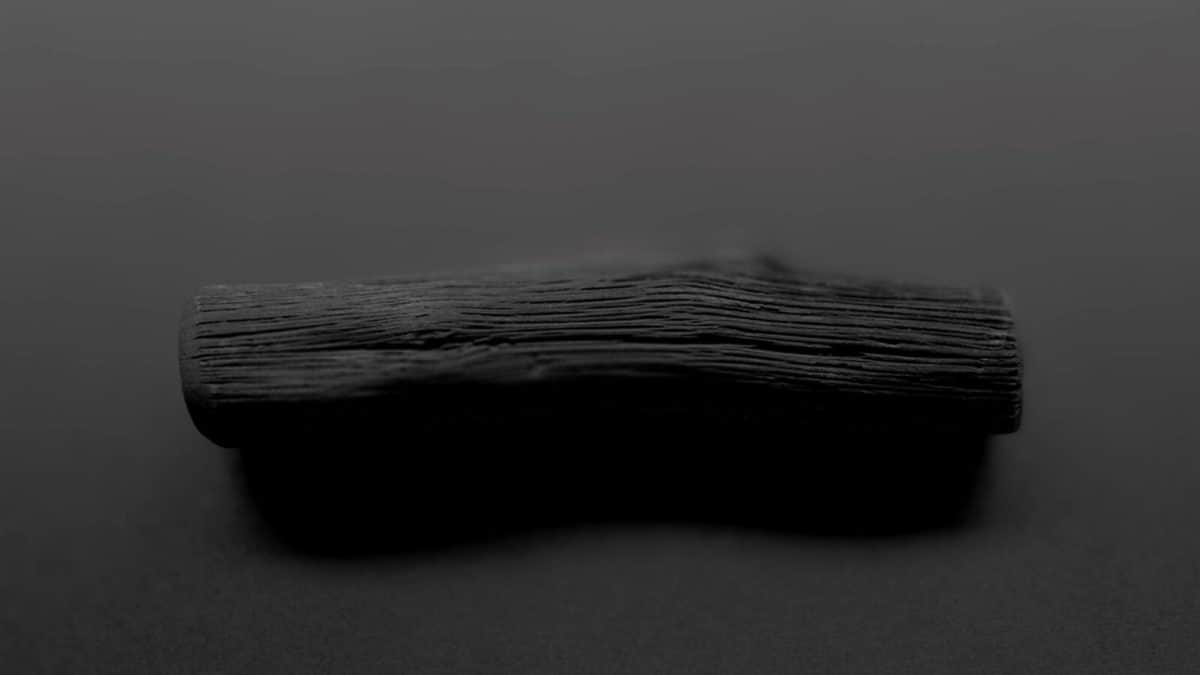Binchotan (備長炭): The Specialty Charcoal From Japan
Binchotan is a type of charcoal that is made from oak trees. It is widely used in Japan for cooking and grilling, as well as for water purification.
Binchotan has a high density and is very porous, which makes it ideal for absorbing impurities from water.
When used for cooking, binchotan charcoal imparts a subtle smoky flavor to food.

This premium quality lump charcoal is only produced in southwest Japan. Hence, why it’s expensive and special.
The charcoal is handmade by locals in large clay kilns. The binchotan is unique because they draw out the moisture of the wood slowly.
The resulting charcoal is so pure, many Japanese firms use it for purifying water and air. In addition, binchotan burns longer than any other charcoal variety.
It’s an expensive product, so use it sparingly and only for konro grilling. Don’t waste it; use a small amount since it retains heat well.

Check out our new cookbook
Bitemybun's family recipes with complete meal planner and recipe guide.
Try it out for free with Kindle Unlimited:
Read for freeIn this post we'll cover:
- 1 What does “binchotan” mean?
- 2 What’s the origin of binchotan?
- 3 How is binchotan made?
- 4 What’s the difference between binchotan and regular charcoal?
- 5 What’s the difference between binchotan and thaan?
- 6 What’s the difference between binchotan and ogatan?
- 7 What Japanese dishes do you make with binchotan?
- 8 Conclusion
What does “binchotan” mean?
Binchotan is a Japanese word for “white charcoal.” It comes from its inventor Bichū-ya Chōzaemon who invented it and started producing it in Tanabe, in the Wakayama prefecture. Hence the word “binchotan”.
What’s the origin of binchotan?
Binchotan was invented in the Edo period by a craftsman named Bichū-ya Chōzaemon. He started producing it in Tanabe, Wakayama. Binchotan is made from ubame oak, the official tree of Wakayama, and it’s only really authentic binchotan if it’s made from that tree.
The official binchotan from that area is called Kishū binchō-tan.
How is binchotan made?
Binchotan charcoal is made from oak trees burned in kilns at high temperatures. The bricks are kept in the shape of the branches instead of pulverizing them into briquettes, which is what gives it the porous texture.
What’s the difference between binchotan and regular charcoal?
Binchotan is made from a different type of oak than regular charcoal, and it’s burned at a higher temperature. This results in a charcoal that is denser and more porous.
It has a different shape because it’s not processed into lumps or briquettes. It can keep the shape of the branches because it’s slowly heated in a sealed kiln where no oxygen can reach it at low temperatures for up to four days.
The last part is refining it at 1750 degrees Fahrenheit for a short time.
While still hot, it’s taken from the kiln and immediately cooled down by smothering it with sand and soil until cool. This is where the white outer layer comes from.
That’s why it has such a high carbon content of 95%, with Kishū binchō-tan even reaching 96%. That’s why Kishu from the Wakayama is the best.
Because it has such a high carbon content, it burns slowly and evenly. It also doesn’t produce any sparks, which is important for grilling, and it’s almost odorless which can keep your meat tasting like meat, a staple of Japanese grilling.
How long does binchotan last?
Binchotan charcoal can last for 3-5 hours, depending on the thickness. The thicker the piece, the longer it will last.
What’s the difference between binchotan and thaan?
Thaan is a type of charcoal from Thailand that is made from hardwood trees, just like binchotan. It has the same production process and porous and high carbon content, but instead of oak trees it’s made from rambutan trees giving a slight fruity undertone.
What’s the difference between binchotan and ogatan?
Ogatan is a type of Japanese charcoal made from pine trees. It has a lower carbon content and is less porous than binchotan, meaning it doesn’t absorb as many impurities. It’s also not as dense, so it burns faster.
What Japanese dishes do you make with binchotan?
Some popular dishes made with binchotan charcoal are yakitori, where chicken skewers are grilled over binchotan.
Any dishes made on a konro grill also often use binchotan as the heating source. Then there’s my favorite robatayaki.
Conclusion
Binchotan is a very versatile type of charcoal that can burn for a very long time without imparting a strong flavor on the meat.
It’s almost a must for the minimalistic Japanese style of grilling.
Also read: these are the best binchotan grills and the best charcoal to use
Check out our new cookbook
Bitemybun's family recipes with complete meal planner and recipe guide.
Try it out for free with Kindle Unlimited:
Read for freeJoost Nusselder, the founder of Bite My Bun is a content marketer, dad and loves trying out new food with Japanese food at the heart of his passion, and together with his team he's been creating in-depth blog articles since 2016 to help loyal readers with recipes and cooking tips.
